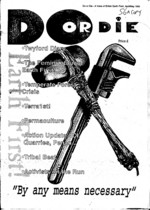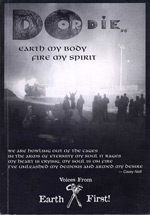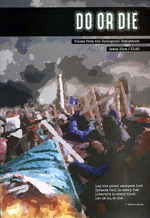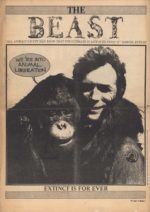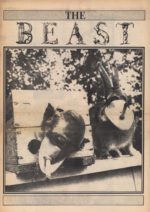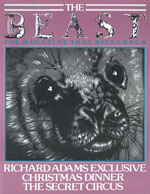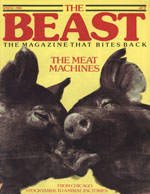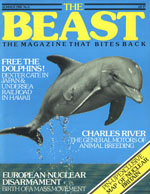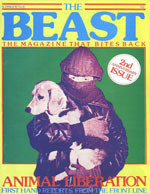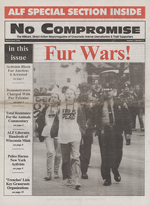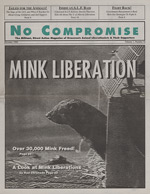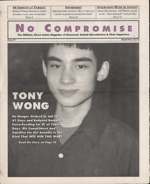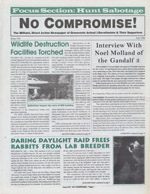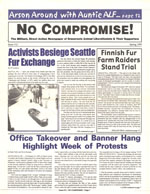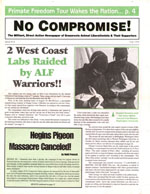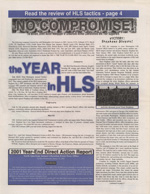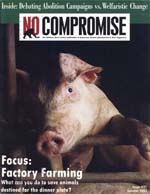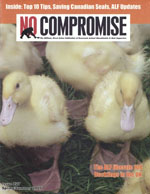Do or Die was a monumental achievement of internal communication for the radical environmental movement. Self critical, smart-assed, and information dense- there is no better source material for this era of wilderness defense.
Anti-Nuclear
The Complete The Beast
The Beast International Times Supplements 1-2, The Beast 1-10 (1978-1981. London, England)
The Beast began it’s run during a time of global social and political decay. As the voters of the west fell under the spell of charismatic and brutal conservatives, a broad coalition of anti-nuke, anti-fascist, union, conservationist, environmentalist, and animal lib activists entrenched themselves to fight back. As things “hotted up” in the streets, the staff of the magazine followed the action and ideas of an astonishing number of people and groups. The tone in the early issues is optimistic, brave, and intelligent, and offers a fascinating glimpse into the psyche of activists during the era.
The history covered is equally incredible. Articles offer the story of the first animal liberation raid in the United States, the origins of the Hunt Saboteurs Association, and the early days of the Animal Liberation Front. Lost figures, like OG U.S. Hunt Sab and eco-prisoner John Walker, come back to life in these old pages. Important thinkers, such as Henry Spira, Peter Singer, Richard Adams, and Paul Watson were regular contributors. Then, there are the images! Between the full color, glossy covers are amazing pictures of early raids, movement legends, and epic moments on our movement’s timeline. One such photograph, taken in 1980 and shown in issue #10, captures a small group of Animal Liberation League activists standing with banners in a field, bandannas covering their faces, fists in the air. More than 30 years later young people still show that same spark of rebellion and hope.
Targeting the information inside to a wide variety of “animal protection” ideologies, The Beast quickly drew the attention of people ranging from old school anti-vivisectionists to environmentalists. This new readership included people like McLibel defendant Dave Morris, Animal Liberation Front co-founder Ronnie Lee, and open rescue pioneer Pattie Mark. By the time the full size magazine had an existence independent from the International Times, foreign correspondents were already on board and writing about the emerging movement for animal liberation taking place globally.
The Complete No Compromise
No Compromise 1-30. Includes Strategic Non-Violence for Animal Liberation insert included with issue #8 as separate publication. (1996-2006, Sacramento, CA / Minneapolis, MN / Caldwell, NJ / Old Bridge, NJ / Santa Cruz, CA / San Francisco, CA)
Text postNo Compromise, which billed itself as “The militant, direct action newsmagazine of grassroots animal liberationists and their supporters,” was the most important animal rights publication of the 1990s. Despite its many problems, frequent delays, and constant changes in editorial staff, the magazine energized the movement in a way that is difficult to explain to a generation that never witnessed pre-internet activism.
In the mid 90s there were a few, isolated groups around the country who were participating in civil disobedience actions and staging loud protests against local labs and fur stores. These groups were largely unaware of each others’ existence and without a gathering like Earth First!’s Round River Rendezvous, unable to share tactical advice or co-ordinate targets.
In 1996 there was a national meeting of animal rights activists in Washington DC dubbed World Animal Awareness Week and March for the Animals. The event was considered a failure as only 3,000 of the estimated 100,000 participants materialized. But staff from No Compromise were present passing out the first issue and asking grassroots organizations for their contact information. Suddenly groups like the Animal Rights Direct Actions Coalition were meeting with the Coalition to Abolish the Fur Trade, the Animal Defense Leagues, and the Student Organization for Animal Rights.
As the grassroots grew increasingly aware of the efforts of other organizations, regional demonstrations began being planned. The first such demonstration after the March for Animals took place at the Seattle Fur Exchange, where activists used bike locks to attach themselves to each other and block the drive way of the fur auction. All of the action got reported on in No Compromise, and suddenly bike locks gave way to lock boxes, which gave way to super boxes and barrels and tripods as civil disobedience tactics spread across the country wherever the magazine was distributed. There was an explosion not just in voluntary arrest scenarios, but also in underground direct action. The print runs of No Compromise kept climbing and it became the must read publication for animal rights militants.
The tone of the magazine at its start was hopeful, and each issue was packed with increasingly daring protests and direct actions. As the movement struggled to find focus and dealt with the departure of founder Freeman Wicklund, the the mood shifts to frustration and confusion, only to be plucked back into hopeful territory with the rise of SHAC.
After 30 issues, the steering committee of No Compromise decided to stop publishing in 2006. Their decision could not have come at a worse time. With the SHAC website and newsletter killed by the convictions of the SHAC 7, Bite Back being published only sporadically and with a limited focus, and the Earth First! Journal mired in infighting, the sudden absence of No Compromise meant that the primary sources for radical animal liberation news, opinion, and strategy were the twin sewers of online social networks and the North American Animal Liberation Press Office. These were dark times for our movement, and we are only just beginning to recover.


